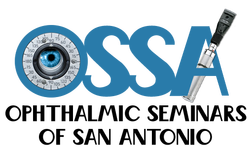Basic Ocular Motility
A review of the extra ocular muscle actions, strabismus types, amblyopia detection and, the evaluation assessment methods as outlined in the ophthalmic technician criteria for certification will be discussed in the course.
This course will introduce the newest ophthalmic assistant to ocular motility and provide a great opportunity for review for the experienced ophthalmic technician.
Upon completion of this course, the participant should be able to:
1. List the extra ocular muscles and their actions.
2. Describe the types of strabismus.
3. Describe the types of amblyopia and method for detection and
evaluation assessment methods.
This course will introduce the newest ophthalmic assistant to ocular motility and provide a great opportunity for review for the experienced ophthalmic technician.
Upon completion of this course, the participant should be able to:
1. List the extra ocular muscles and their actions.
2. Describe the types of strabismus.
3. Describe the types of amblyopia and method for detection and
evaluation assessment methods.
© 2024
